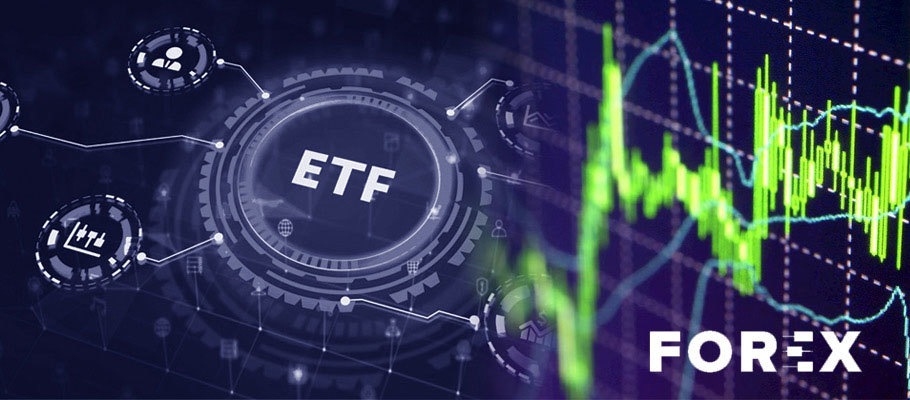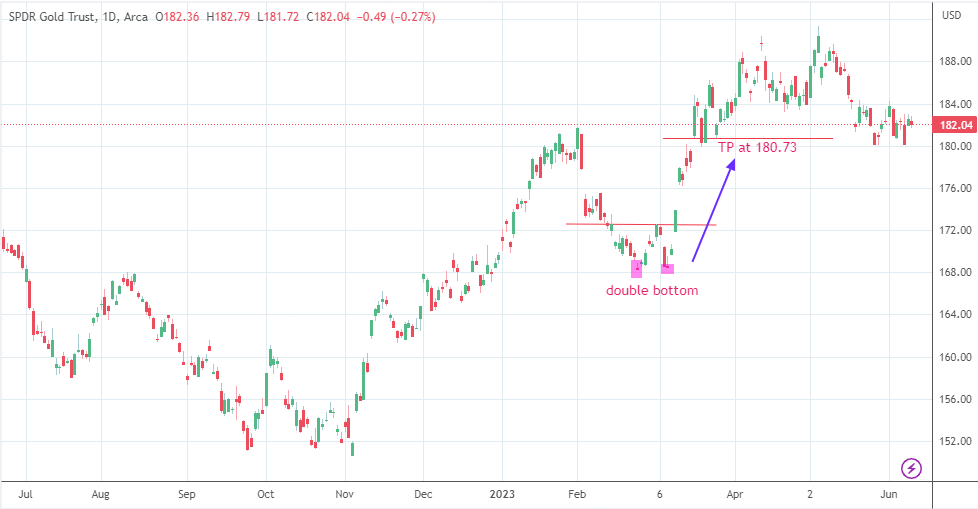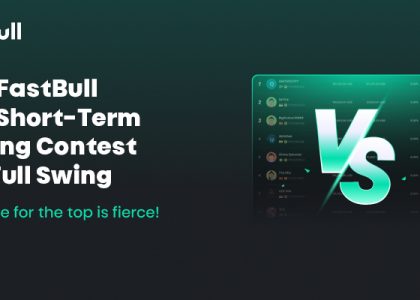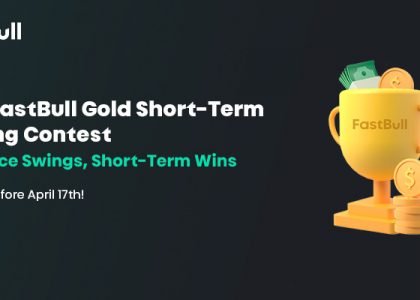
An Exchange Traded Fund (ETF) is a passive form of investment in which a basket of assets are composed into a fund asset that can be traded like stocks. In other words, an ETF is a fund made up of a composite basket of assets, and split into tradable units that traders can purchase and sell just the way they would trade a stock. The assets within the fund can be stocks, currencies, commodities and index assets.
The ETF tracks the price movements of these assets, and can work either by direct correlation with the composite assets (ETF price moving in the same direction as the composite assets), or in an inverse relationship with the assets (ETF price moving opposite the direction of the price of the composite assets.
There are two forms of ETF investment:
A) You can trade the ETFs on an exchange by physically buying units of ownership of the fund, and selling the same to book profits.
B) You can trade contracts that track the price of the underlying ETF asset without physically buying or selling the composite units of ownership.
Due to the fact that some ETFs are designed with assets from different asset classes, it is important to understand how to trade ETFs in general, and how to trade them on forex platforms.
ETF Trading on FX Platforms: Matters Arising
ETF trading on forex platforms has some key ways in which it differs from ETF trading that occurs on exchanges. Some of these differences are as follows:
A) ETF trading on forex platforms is leveraged. You are required to put up a margin as collateral for all trades.
B) You have the ability to profit from rising prices by using buy orders (market or limit), and you can also profit from falling prices by short-selling.
C) As an extension of point (b) above, trading ETFs on forex platforms comes with order type flexibility. You not only have the opportunity to buy or sell at market prices, but you can also use limit or stop orders to enable you to enter trades at prices that you want to enter at.
D) You have a number of risk management tools available to you. For instance, you have the Stop Loss (SL) and Take Profit (TP) tools which enable you to control any losses or capture profits respectively.
E) You have access to charts and other tools used for technical analysis. Some FX platforms also give traders access to market-moving news that enables them to make decisions based on fundamental analysis. For instance, any news that impacts gold prices will also affect the ETFs that track the performance of gold such as the SPDR Gold Shares ETF.
F) ETFs are a good way to achieve market diversification in your investments, as some of them are composed of a variety of assets pooled from different asset classes.
How ETF Trading on a Forex Platform Works
ETF trading on a forex platform does not involve the physical acquisition of the product. Rather, what is traded are contracts that are based on the pricing of the underlying ETF instrument. You are going to find ETFs that are based on a single asset, and ETFs that are made up of a basket of assets, some of which are in different asset classes but share some form of correlation.
Step 1
We shall assume you already have an account with a forex broker offering ETFs. But in case you have not, scroll to the list below to open an account with a broker listed. These brokers all offer ETFs on their platforms.
Step 2
Once your account is up and running, you can head over to the ETF asset suite within the broker's platform. Search for the ETF you want to trade and use any of the long or short order types to execute your trades.
Step 3
Trade management is the next step. Once your orders are active, you have to consciously monitor them, taking care to also monitor the performance of the asset(s) that make up the ETF. This is because the ETF will gravitate in a manner that mimics the price behaviour of the underlying asset(s) that constitute the ETF, either in a direct manner or an inverse fashion as constructed.
ETF Types
The ETF market now boasts of more than 8000 ETFs. These exchange traded funds are classified in various ways. Some classifications are based on the markets the ETFs track, and some are classified in other ways. What is presented below is a general classification of ETFs. The style of classification also helps traders to decide what ETFs to trade and how to go about such trades.
ETFs can be classified according to the class of assets that are tracked. Here, we have:
- Commodity ETFs
- Bond ETFs
- Equity ETFs
- Currency ETFs
- Foreign Market ETFs
Commodity ETFs track the performance of certain commodities, or a basket of commodities such as gold, oil, silver, ec. Gold is the most common commodity tracked with ETFs. Indeed, there are ETFs that either track the performance of gold as a single asset. An example is the SPDR Gold Shares ETF (GLD.arcx).
Bond ETFs are also known as Fixed Income ETFs. This is because bonds are fixed income investment vehicles in which the bond issuer pays a fixed return known as interest to the bond subscriber or investor. Fixed income ETFs present a lower risk profile and are a favourite of many investors. Most bond ETFs track the US Treasuries (probably the most famous bond instrument in the world), as well as various global national and municipal bonds. Examples are the Vanguard S&P 500 ETF (VOO.arcx), iShares 1-3 Year Treasury Bond ETF (SHY.xnms) and SPDR S&P 500 ETF (SPY.arcx).
Equity ETFs are built to track the performance of stocks and equities from various parts of the world. Considering that the number of globally traded stocks runs into the hundreds of thousands, such ETFs tend to create niches around sectors. So you have equity ETFs that track tech stocks, pharmaceuticals/biotech stocks, banking stocks, etc.
Currency ETFs are constructed to give exposure to a currency or currency groups. The advantage of currency ETFs is that they can be used to hedge against the risk of trading in currencies in the FX market. For instance, rather than trade a single currency, you may decide to buy a currency ETF made up of currencies with similar characteristics.
Foreign Market ETFs are built to track foreign stock indices, including those of emerging markets. An example is the iShares Core MSI Emerging Markets ETF (IEMG.arcx).
Some ETF Trading Techniques
There are various ways to trade ETFs on forex platforms, and it is good you get to know these methods so you eventually pick one or two and master them for use.
ETF trading can be done in the following ways:
Dollar-Cost Averaging
If you are confident in your trade direction but the price has gone against you and you still think the trade will return to its original trajectory, you may decide to add more units to your existing position. What this does is that it reduces your overall trade costs and also allows your position to make more money than originally constructed.
For instance, if you buy 100 units of an ETF asset at price A, and the asset price falls by 50% to price B, you may decide to add 100 more units at the new price. Not only are you now buying at half the original price (which cuts down the overall price to 75% of the original price) but you now stand a chance of making more money if the price appreciates. If the price eventually does rise by 60% above the original entry, the trader will actually make 85% profit (25% price reduction + 60% profit above original price). Of course, you must also remember that since this is a leveraged trade, you could lose everything if the price goes further south and triggers the SL.
Swing Trading
Swing trading is the practice of keeping a trade open for several days. Trading ETFs on forex platforms may not be very amenable to day trading, so swing trading is a useful alternative. For instance, if there is major news in the market whose impact lasts for several days, you can trade the news using an ETF CFD, especially if the move will extend the existing trend.
Seasonal Trades
Some ETFs tend to perform better at certain times of the year due to external factors that alter the demand-supply dynamics of the constituent assets. For instance, there is always a chance of production shutdowns during an active hurricane season along the US Gulf Coast. This tends to reduce supply of crude in the international market, boosting oil prices and energy-linked currencies such as the Canadian Dollar and Norwegian Krone. These may be good times to expect good performances from ETFs that track energy markets. Also, the Indian wedding season in the 4th quarter of the year tends to lead to a surge in gold demand, which shores up gold prices. So this may also be a good time to buy into gold-linked ETFs.
Hedge Trades
ETFs can also be used as hedges against downside risks posed by investments in the underlying assets. For instance, if you are long on energy stocks, you may decide to create a short hedge on the energy sector by assuming a short position on an energy-based ETF CFD to protect from a downside risk which could be posed by a sudden production change (a boost) by a major oil player. So if for example, Saudi Arabia raises production of crude oil by 2 million barrels a day, the expected drop in oil prices may be bad for the energy stocks, but will play into the hands of your short position on an energy ETF CFD.
ETF Pros and Cons
Pros
- ETFs are flexible assets.
- They offer a wide exposure to various market segments and assets.
- They can be used to create hedge trades.
- They are easy to trade as they are traded on the basis of long and short positions.
Cons
- They can only be traded at specific times, especially if the ETF basket contains assets such as stocks that have specific market hours.
- A sudden closure of an ETF automatically leads to a liquidation of the ETF CFD position and loss of the investment.
Trade Example
In trading an ETF CFD, you need to consider the leverage (usually 1:5), your account size, and the performance of the underlying asset within the ETF.
Support you want to trade 100 units of an ETF known as GLD.arcx and it is trading at 167.50 (bid)/168.50 (ask). If you think the price of GLD.arcx will rise in the future to coincide with rising gold prices, you would use a long order to trade this.
100 units of this position (buying at ask price), will require 100 X 168.50, which is $16,850 for the position. With a leverage of 1:5, you would need 20% margin. So setting up the trade would require a fifth of $16,850, which is $3,370.

Chart of GLD.arcx ETF CFD
So if you trade the double bottom and catch the upside move toward the exit at 180.73, the move would provide a profit of (180.73 – 168.50) X 100 units = 12.23 x 100 = $1,223. You can see from this trade example that the same way you would analyze and trade the underlying asset in an ETF is the same way you would analyze the ETF CFD, especially if the ETF is tracking only one asset like this one. Multi-asset ETFs would require more extensive analysis and the trade setups would involve consideration of the macroeconomics affecting each constituent asset.




